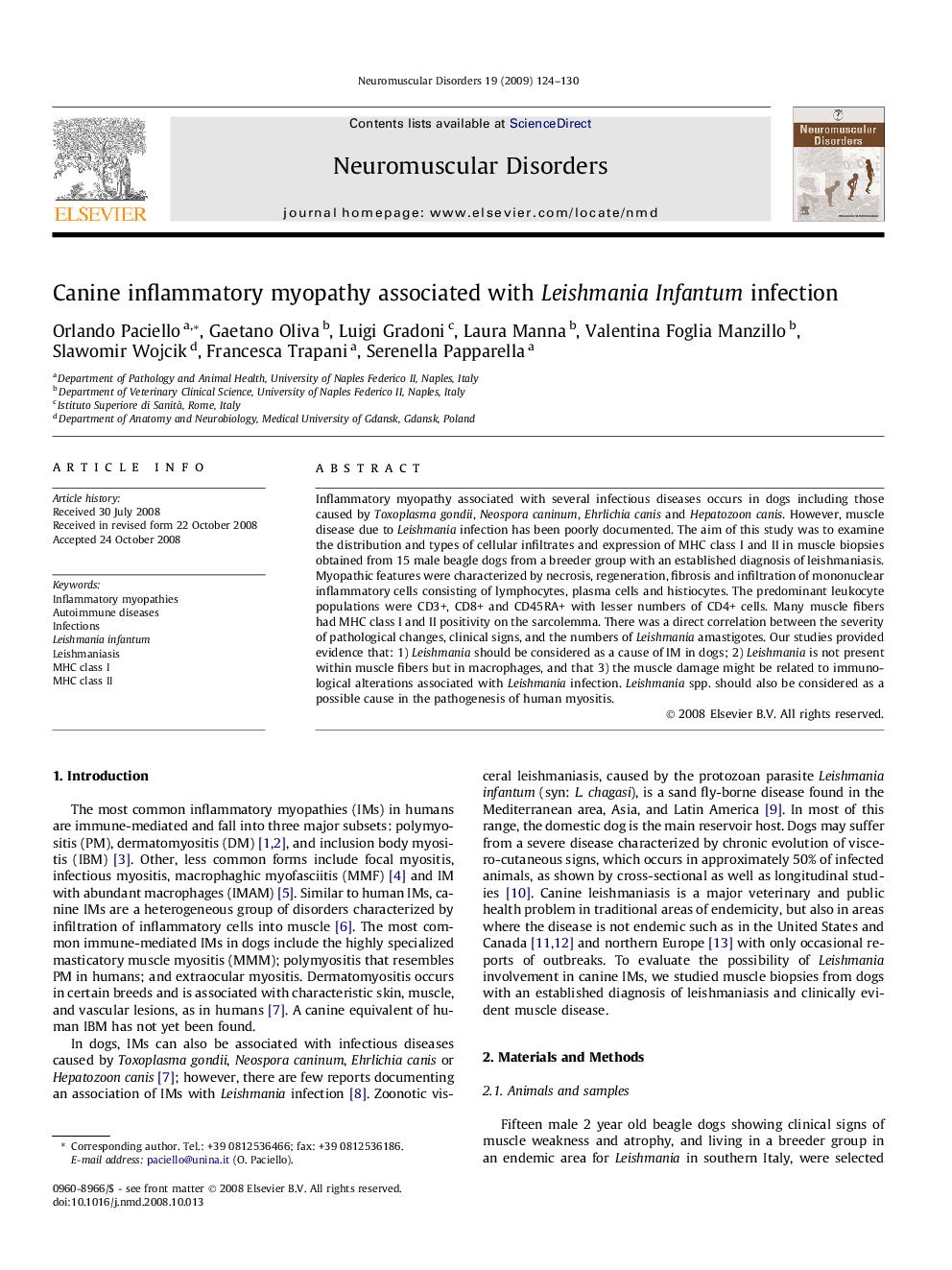| Article ID | Journal | Published Year | Pages | File Type |
|---|---|---|---|---|
| 3081053 | Neuromuscular Disorders | 2009 | 7 Pages |
Inflammatory myopathy associated with several infectious diseases occurs in dogs including those caused by Toxoplasma gondii, Neospora caninum, Ehrlichia canis and Hepatozoon canis. However, muscle disease due to Leishmania infection has been poorly documented. The aim of this study was to examine the distribution and types of cellular infiltrates and expression of MHC class I and II in muscle biopsies obtained from 15 male beagle dogs from a breeder group with an established diagnosis of leishmaniasis. Myopathic features were characterized by necrosis, regeneration, fibrosis and infiltration of mononuclear inflammatory cells consisting of lymphocytes, plasma cells and histiocytes. The predominant leukocyte populations were CD3+, CD8+ and CD45RA+ with lesser numbers of CD4+ cells. Many muscle fibers had MHC class I and II positivity on the sarcolemma. There was a direct correlation between the severity of pathological changes, clinical signs, and the numbers of Leishmania amastigotes. Our studies provided evidence that: 1) Leishmania should be considered as a cause of IM in dogs; 2) Leishmania is not present within muscle fibers but in macrophages, and that 3) the muscle damage might be related to immunological alterations associated with Leishmania infection. Leishmania spp. should also be considered as a possible cause in the pathogenesis of human myositis.
